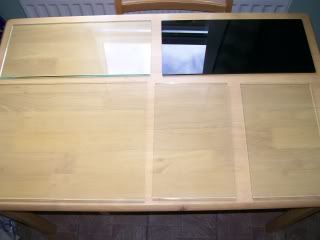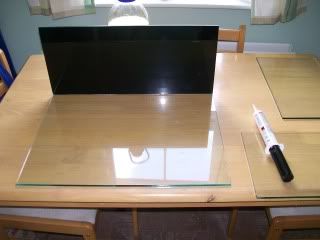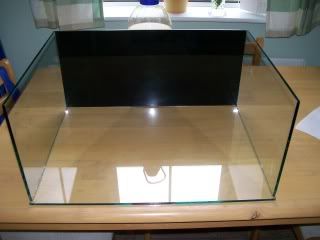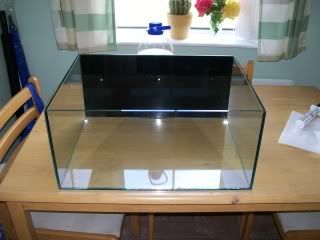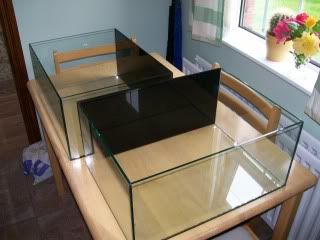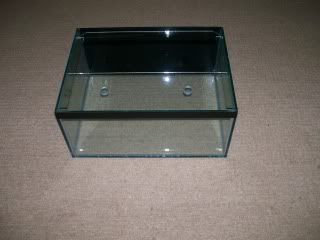Tropical Fishkeeping
Amazon - Yavari – Mirim A fish keeper’s dream
- Details
- Written by arabu1973
- Parent Category: Articles
- Hits: 3618
In November 2011, I had the rare opportunity to visit one of the wildest places in Neotropics by participating in an expedition to the Amazon in search of new species of fish by exploring rivers that have not been explored until now, upper Mirim, Arabella and Capybara canos (creeks). The expedition was organized by a well-known expert on fish and explorer, Heiko Bleher.
On Monday morning, 21 November 2011, i left Dublin for Paris then Bogota and finally Laeticia (COL)/Tabatinga (BRA) which were the starting point cities for this trip.
I arrived in Bogota, Colombia's capital, Monday afternoon (it was still Monday because they are 5 hours behind Dublin), tired and without a word of Spanish but very happy that I finally arrived in South America.
First impression of Bogota wasn’t too good, the road from the airport to the hotel, where i was to meet Heiko, crossed the city from one end to the other through the city centre. Most of the buildings were old and rundown. After i arrived at the hotel I was advised not to go out at night.
The hotel receptionist spoke only Spanish, the hotel owner told me that it is very hard to find someone who speaks a language other than Spanish, so trying to explain to the girl that I want a room for one night and her looking at me and smiling was quite funny. After a while she let me use the computer and with the help of Google translator I made myself understood, I got a room for one night and I left a message for Heiko to meet in the morning for breakfast in the restaurant, his plane didn’t land until 23.30.
The next morning, Tuesday, 22 November 2011, in the restaurant I met Heiko and the other two companions that came with us on this trip, Hartwig, a German living in Italy and Claudia a Brazilian living in Italy and Phucket. After the necessary introductions I ordered breakfast, traditional Colombian TAMALES that is polenta filled with meat and vegetable boiled in banana leaves.
[IMG]http://i247.photobucket.com/albums/gg139/arabu1973/Amazon%202011/22Nov/breakfast.jpg[/IMG]
After breakfast we went to the airport to take the 11.00 am plane to Laeticia.
[IMG]http://i247.photobucket.com/albums/gg139/arabu1973/Amazon%202011/22Nov/1.jpg[/IMG]
Heiko is busy all the time, if he doesn’t check/reply to e-mails on his laptop then he documents everything on paper.
After 2 hours of flying I see the Amazon for the first time
[IMG]http://i247.photobucket.com/albums/gg139/arabu1973/Amazon%202011/22Nov/2.jpg[/IMG]
and very quickly afterwards, 13.00 local time, the airport in the town of Leticia, which is right on the edge of the Amazon.
[IMG]http://i247.photobucket.com/albums/gg139/arabu1973/Amazon%202011/22Nov/3.jpg[/IMG]
where we are met by Steven from UK that has a lodge in Laeticia, situated at 5 km outside the town
[IMG]http://i247.photobucket.com/albums/gg139/arabu1973/Amazon%202011/22Nov/9.jpg[/IMG]
where we will spend one night before the departure on the expedition and one night before the return to Bogota. We couldn't leave for the lodge before we had a close look at this area of the Amazon
[IMG]http://i247.photobucket.com/albums/gg139/arabu1973/Amazon%202011/22Nov/4.jpg[/IMG]
[IMG]http://i247.photobucket.com/albums/gg139/arabu1973/Amazon%202011/22Nov/5.jpg[/IMG]
where we saw how the poor people live on the outskirts of the city.
[IMG]http://i247.photobucket.com/albums/gg139/arabu1973/Amazon%202011/22Nov/6.jpg[/IMG]
[IMG]http://i247.photobucket.com/albums/gg139/arabu1973/Amazon%202011/22Nov/8.jpg[/IMG]
[IMG]http://i247.photobucket.com/albums/gg139/arabu1973/Amazon%202011/22Nov/7.jpg[/IMG]
After we had a good look around we left for the lodge where we checked out our room for the night. We had a huge meal because we knew that now was the time to eat as much good food as we could because in the jungle the food wouldn’t be so diverse.
The next morning, November 23, after breakfast we checked and packed our bags for the expedition and then we went to Laeticia/Tabatinga to do last minute shopping and to embark on our boat that was to be our means of transport for the next 7-8 days.
[IMG]http://i247.photobucket.com/albums/gg139/arabu1973/Amazon%202011/23Nov/11.jpg[/IMG]
[IMG]http://i247.photobucket.com/albums/gg139/arabu1973/Amazon%202011/23Nov/10.jpg[/IMG]
Tabatinga port, Brazil
[IMG]http://i247.photobucket.com/albums/gg139/arabu1973/Amazon%202011/23Nov/12a.jpg[/IMG]
[IMG]http://i247.photobucket.com/albums/gg139/arabu1973/Amazon%202011/23Nov/12b.jpg[/IMG]
Here I must mention that on a map, Laeticia, looks like it’s located a few kilometres distance from Tabatinga, in Brazil, but in reality the two towns have expanded so much that now are like a city divided in two, the main street of Laeticia continues with the main street in Tabatinga, you know that you have crossed from one country to another only when you see a piece of wood on the footpath that says ' Forza Nacional "... there is no border or border guards.
Until the boat driver went to buy 800 gallons of diesel for the expedition, we decided to have one last hearty meal until our return from the trip, in a restaurant in Brazil
[IMG]http://i247.photobucket.com/albums/gg139/arabu1973/Amazon%202011/23Nov/13.jpg[/IMG]
Heiko has advised me to try the original Cola
[IMG]http://i247.photobucket.com/albums/gg139/arabu1973/Amazon%202011/23Nov/14.jpg[/IMG]
After we finished eating, we boarded the boat and we crossed the river Amazon in Peru to get a peruvian visa, because the river Javari (local language) or Yavari (on maps) is the border between Brazil and Peru.
The town right across Laeticia/Tabatinga on the Peruvian side is called Santa Rosa but if it wouldn’t be for this sign
[IMG]http://i247.photobucket.com/albums/gg139/arabu1973/Amazon%202011/23Nov/15.jpg[/IMG]
you wouldn’t even know that you crossed into Peru. There is no proper port in Santa Rosa, it’s just a wooden house that has this painting on it
[IMG]http://i247.photobucket.com/albums/gg139/arabu1973/Amazon%202011/23Nov/16.jpg[/IMG]
The Visa Office was a room with a counter and a wooden bench and this room was attached to the house of the person who gave the visas.
[IMG]http://i247.photobucket.com/albums/gg139/arabu1973/Amazon%202011/23Nov/17.jpg[/IMG]
After we received the visas, we stopped at the floating shops for the last supplies
[IMG]http://i247.photobucket.com/albums/gg139/arabu1973/Amazon%202011/23Nov/19.jpg[/IMG]
[IMG]http://i247.photobucket.com/albums/gg139/arabu1973/Amazon%202011/23Nov/18.jpg[/IMG]
Not long after we left Laeticia/Tabatinga/Santa Rosa the night fell very quickly
[IMG]http://i247.photobucket.com/albums/gg139/arabu1973/Amazon%202011/23Nov/20.jpg[/IMG]
Here on the Amazon, the day turns into night very quickly, it takes about 20 minutes from daylight to change into full night. The day starts at 05.00 am and is dark at 18: 00.
[IMG]http://i247.photobucket.com/albums/gg139/arabu1973/Amazon%202011/23Nov/21.jpg[/IMG]
The plan for today was to get to a village called Santa Rita before dark but it was not so, and besides that, at 19.00, it started to rain so heavy that we couldn’t see a meter in front of us, so we had to stop for a few hours until it stopped raining. In the photo above you can see the Indian guide with a flashlight, which works on the boats battery, illuminating the river, to see where we go. Around 10 pm, we arrived in the village that we were looking for, where we were greeted with great warmth by the village/tribal chief. They were Indians from the Jagua tribe and the chief had offered his home so that we could cook some food in his kitchen
[IMG]http://i247.photobucket.com/albums/gg139/arabu1973/Amazon%202011/23Nov/22SantaRita.jpg[/IMG]
[IMG]http://i247.photobucket.com/albums/gg139/arabu1973/Amazon%202011/23Nov/23.jpg[/IMG]
and to hang our hammocks if we want, but because we had tents we've installed them between two huge trees that were near his house. After eating I put up my tent near one of the trees and when I finished I had the pleasure to see who my neighbour was for that night
[IMG]http://i247.photobucket.com/albums/gg139/arabu1973/Amazon%202011/23Nov/24.jpg[/IMG]
[IMG]http://i247.photobucket.com/albums/gg139/arabu1973/Amazon%202011/23Nov/25.jpg[/IMG]
a tarantula the size of my hand, with thick, hairy legs even hairier than mine! I checked that the entrance to the tent was secure because I didn’t want to wake up in the middle of the night with him keeping me warm. I didn’t think I’d sleep at all because I had so many thoughts in my head and I was full of adrenalin just thinking about how it would be tomorrow.
24 November, a cold and foggy morning, only now I realize why Heiko told me to bring warm clothes and thick socks, it’s a big temperature difference between day and night.
[IMG]http://i247.photobucket.com/albums/gg139/arabu1973/Amazon%202011/24Nov/26.jpg[/IMG]
[IMG]http://i247.photobucket.com/albums/gg139/arabu1973/Amazon%202011/24Nov/28.jpg[/IMG]
We said thank you to the chief for the hospitality and for letting us to use his house/kitchen to cook
[IMG]http://i247.photobucket.com/albums/gg139/arabu1973/Amazon%202011/24Nov/27JaguaIndians.jpg[/IMG]
and we continued our travels on the river
[IMG]http://i247.photobucket.com/albums/gg139/arabu1973/Amazon%202011/24Nov/30.jpg[/IMG]
[IMG]http://i247.photobucket.com/albums/gg139/arabu1973/Amazon%202011/24Nov/31.jpg[/IMG]
Speaking of boats, the boat in the next picture is the local bus, because the roads are almost non-existent and the ones that do exist in the jungle are used only by the trucks. Goods are transported on the top of the boat, people and animals inside
[IMG]http://i247.photobucket.com/albums/gg139/arabu1973/Amazon%202011/24Nov/29.jpg[/IMG]
And this is the fast boat, not many can afford a trip with this boat
[IMG]http://i247.photobucket.com/albums/gg139/arabu1973/Amazon%202011/24Nov/45.jpg[/IMG]
a few hours later we stopped for a walk through the jungle
[IMG]http://i247.photobucket.com/albums/gg139/arabu1973/Amazon%202011/24Nov/35.jpg[/IMG]
[IMG]http://i247.photobucket.com/albums/gg139/arabu1973/Amazon%202011/24Nov/32.jpg[/IMG]
[IMG]http://i247.photobucket.com/albums/gg139/arabu1973/Amazon%202011/24Nov/35a.jpg[/IMG]
[IMG]http://i247.photobucket.com/albums/gg139/arabu1973/Amazon%202011/24Nov/34.jpg[/IMG]
[IMG]http://i247.photobucket.com/albums/gg139/arabu1973/Amazon%202011/24Nov/33.jpg[/IMG]
After an hour of cutting lianas and other plants, which was exhausting, we returned to the boat. A while later on the left bank of the Amazon we saw a small waterfall and we decided to explore the creek
[IMG]http://i247.photobucket.com/albums/gg139/arabu1973/Amazon%202011/24Nov/36.jpg[/IMG]
[IMG]http://i247.photobucket.com/albums/gg139/arabu1973/Amazon%202011/24Nov/37.jpg[/IMG]
The holes that are seen in the bank are the caves where in the rainy season the males of the catfish family take care of the eggs deposited by the females and the fry until they leave.
Heiko has decided to climb up to the bank to explore the creek, it was very hard to climb the steep bank but when he came back down he did it a lot faster!
[IMG]http://i247.photobucket.com/albums/gg139/arabu1973/Amazon%202011/24Nov/40.jpg[/IMG]
[IMG]http://i247.photobucket.com/albums/gg139/arabu1973/Amazon%202011/24Nov/41.jpg[/IMG]
The water was very deep; the waterfall is located in the curb of the river. Until Heiko returned we did some fishing and took some photos
[IMG]http://i247.photobucket.com/albums/gg139/arabu1973/Amazon%202011/24Nov/42.jpg[/IMG]
This type of fish is found everywhere and it is very tasty, we ate a lot of them during the trip. After Heiko returned we continued and we saw several villages/native houses
[IMG]http://i247.photobucket.com/albums/gg139/arabu1973/Amazon%202011/24Nov/44.jpg[/IMG]
[IMG]http://i247.photobucket.com/albums/gg139/arabu1973/Amazon%202011/24Nov/44a.jpg[/IMG]
When we arrived at the entrance to the river Yavari (Javari local language) we stopped for lunch at a camp which one of the local tribe’s uses when going to hunt and have to sleep in the forest
[IMG]http://i247.photobucket.com/albums/gg139/arabu1973/Amazon%202011/24Nov/46.jpg[/IMG]
[IMG]http://i247.photobucket.com/albums/gg139/arabu1973/Amazon%202011/24Nov/47.jpg[/IMG]
[IMG]http://i247.photobucket.com/albums/gg139/arabu1973/Amazon%202011/24Nov/48a.jpg[/IMG]
Until the food was ready Heiko searched for fish around the camp but the water was too dirty and he didn’t catch anything
[IMG]http://i247.photobucket.com/albums/gg139/arabu1973/Amazon%202011/24Nov/48b.jpg[/IMG]
The fishing net that Heiko is using is made of a special material that the catfish and corydoras fins don’t get stuck in
After lunch we got on the road again and before it got dark we got to the next stop, a lake which is reached by a narrow channel from the river
[IMG]http://i247.photobucket.com/albums/gg139/arabu1973/Amazon%202011/24Nov/49.jpg[/IMG]
[IMG]http://i247.photobucket.com/albums/gg139/arabu1973/Amazon%202011/24Nov/50.jpg[/IMG]
[IMG]http://i247.photobucket.com/albums/gg139/arabu1973/Amazon%202011/24Nov/51.jpg[/IMG]
[IMG]http://i247.photobucket.com/albums/gg139/arabu1973/Amazon%202011/24Nov/52.jpg[/IMG]
[IMG]http://i247.photobucket.com/albums/gg139/arabu1973/Amazon%202011/24Nov/53.jpg[/IMG]
In the last photo top right you can see how much the water level increases in the rainy season, those being the tree roots. After 15-20 minutes of navigating the channel we entered the lake itself, lake Fregatta
[IMG]http://i247.photobucket.com/albums/gg139/arabu1973/Amazon%202011/24Nov/54.jpg[/IMG]
[IMG]http://i247.photobucket.com/albums/gg139/arabu1973/Amazon%202011/24Nov/55LagoFregata.jpg[/IMG]
we put up the tents for the night
[IMG]http://i247.photobucket.com/albums/gg139/arabu1973/Amazon%202011/24Nov/57.jpg[/IMG]
[IMG]http://i247.photobucket.com/albums/gg139/arabu1973/Amazon%202011/24Nov/56.jpg[/IMG]
and we caught dinner, two types of PIRANHA, white and red belly
[IMG]http://i247.photobucket.com/albums/gg139/arabu1973/Amazon%202011/24Nov/58.jpg[/IMG]
[IMG]http://i247.photobucket.com/albums/gg139/arabu1973/Amazon%202011/24Nov/59.jpg[/IMG]
then we ate piranha soup, it was so good...
[IMG]http://i247.photobucket.com/albums/gg139/arabu1973/Amazon%202011/24Nov/60.jpg[/IMG]
[IMG]http://i247.photobucket.com/albums/gg139/arabu1973/Amazon%202011/24Nov/61a.jpg[/IMG]
With full bellies and the renewed energy we went to search for fish
[IMG]http://i247.photobucket.com/albums/gg139/arabu1973/Amazon%202011/24Nov/62.jpg[/IMG]
[IMG]http://i247.photobucket.com/albums/gg139/arabu1973/Amazon%202011/24Nov/63.jpg[/IMG]
[IMG]http://i247.photobucket.com/albums/gg139/arabu1973/Amazon%202011/24Nov/64.jpg[/IMG]
[IMG]http://i247.photobucket.com/albums/gg139/arabu1973/Amazon%202011/24Nov/65.jpg[/IMG]
[IMG]http://i247.photobucket.com/albums/gg139/arabu1973/Amazon%202011/24Nov/67.jpg[/IMG]
[IMG]http://i247.photobucket.com/albums/gg139/arabu1973/Amazon%202011/24Nov/66.jpg[/IMG]
It is not easy to look for fish at night time, you have to be very careful about the caimans and snakes, especially anaconda and when you sort among the leaves and small branches, you have to have great patience not to throw away any leaf or branch that could have stuck to it a small fish or even a new one for science. After 3 hours of searching for fish we decided to get back into camp for the night. When entering my tent, on the tree beside me, i discover my neighbour for that night
[IMG]http://i247.photobucket.com/albums/gg139/arabu1973/Amazon%202011/24Nov/61.jpg[/IMG]
A black scorpion, just my luck, I have a “neighbour” again.
On the morning of November 25, we boarded again and we started off on the next leg of the trip. As we left the lake we saw a pink dolphin
[IMG]http://i247.photobucket.com/albums/gg139/arabu1973/Amazon%202011/25Nov/69.jpg[/IMG]
[IMG]http://i247.photobucket.com/albums/gg139/arabu1973/Amazon%202011/25Nov/70.jpg[/IMG]
The dolphin is not to visible due to the fact that they come up to breathe only every 20-25 minutes, just for a few seconds and it's very hard to take good photos. Throughout the expedition I took a lot of photos trying to capture a proper photo of a dolphin but only the photo above was the best.
On the Amazon live two types of dolphins, actually one, the pink dolphin is part of the whale family, only the grey dolphins are real dolphins.
Another type of boat that we saw on the Amazon was this
[IMG]http://i247.photobucket.com/albums/gg139/arabu1973/Amazon%202011/25Nov/71a.jpg[/IMG]
This boat is in fact a family house, they live their entire life here and at the same time they use it for the transport of goods as a source of income.
Pedro, one of the Indian guides told us that he knows a shortcut that cuts across the loop of the river from side to side that saves us a few hours of travel on the main river so we decided to use it. We didn't even know when we got to the shortcut; the entrance to it from the river was a wall of greenery
[IMG]http://i247.photobucket.com/albums/gg139/arabu1973/Amazon%202011/25Nov/72.jpg[/IMG]
but after a few minutes of cutting the branches with a machete we entered on what was the connection between the two sides of the loop
[IMG]http://i247.photobucket.com/albums/gg139/arabu1973/Amazon%202011/25Nov/74.jpg[/IMG]
[IMG]http://i247.photobucket.com/albums/gg139/arabu1973/Amazon%202011/25Nov/75.jpg[/IMG]
We barely entered the channel when it started to rain heavily and to our "joy" we saw that we’d have to get out of the boat to push/pull the boat over the trees that had fallen across the channel
[IMG]http://i247.photobucket.com/albums/gg139/arabu1973/Amazon%202011/25Nov/73.jpg[/IMG]
[IMG]http://i247.photobucket.com/albums/gg139/arabu1973/Amazon%202011/25Nov/78.jpg[/IMG]
[IMG]http://i247.photobucket.com/albums/gg139/arabu1973/Amazon%202011/25Nov/76.jpg[/IMG]
[IMG]http://i247.photobucket.com/albums/gg139/arabu1973/Amazon%202011/25Nov/77.jpg[/IMG]
[IMG]http://i247.photobucket.com/albums/gg139/arabu1973/Amazon%202011/25Nov/79.jpg[/IMG]
After we managed to surpass all the obstacles the channel got wider and we saw in a few different places biotopes for catfish, one in stone and one in clay
[IMG]http://i247.photobucket.com/albums/gg139/arabu1973/Amazon%202011/25Nov/80.jpg[/IMG]
[IMG]http://i247.photobucket.com/albums/gg139/arabu1973/Amazon%202011/25Nov/81.jpg[/IMG]
And then we stopped at a creek where we searched for fish
[IMG]http://i247.photobucket.com/albums/gg139/arabu1973/Amazon%202011/25Nov/82.jpg[/IMG]
[IMG]http://i247.photobucket.com/albums/gg139/arabu1973/Amazon%202011/25Nov/83.jpg[/IMG]
[IMG]http://i247.photobucket.com/albums/gg139/arabu1973/Amazon%202011/25Nov/84.jpg[/IMG]
in the three pictures above you will realize how much the water level increases in the rainy season, in the last photo I’m in the place where the water level is in the rainy season.
The creek was a blackwater biotope, on the bottom was a little sand and a lot of clay but there are no aquatic plants
[IMG]http://i247.photobucket.com/albums/gg139/arabu1973/Amazon%202011/25Nov/85.jpg[/IMG]
[IMG]http://i247.photobucket.com/albums/gg139/arabu1973/Amazon%202011/25Nov/86.jpg[/IMG]
[IMG]http://i247.photobucket.com/albums/gg139/arabu1973/Amazon%202011/25Nov/87.jpg[/IMG]
[IMG]http://i247.photobucket.com/albums/gg139/arabu1973/Amazon%202011/25Nov/88.jpg[/IMG]
A few pictures of what fish we caught in this creek, all are new to science
Tetra
[IMG]http://i247.photobucket.com/albums/gg139/arabu1973/Amazon%202011/25Nov/89.jpg[/IMG]
[IMG]http://i247.photobucket.com/albums/gg139/arabu1973/Amazon%202011/25Nov/91.jpg[/IMG]
[IMG]http://i247.photobucket.com/albums/gg139/arabu1973/Amazon%202011/25Nov/newtetra.jpg[/IMG]
[IMG]http://i247.photobucket.com/albums/gg139/arabu1973/Amazon%202011/25Nov/tetra.jpg[/IMG]
Knifefish
[IMG]http://i247.photobucket.com/albums/gg139/arabu1973/Amazon%202011/25Nov/90.jpg[/IMG]
After we finished exploring the creek we continued up the channel to the main river and then up the river until around 17.00 when we found the entrance to a small lake where we made camp for the night. When we entered the lake we had seen many caimans and I decided that if I’m here on the Amazon I’ll have to try to catch one, so after dinner i went looking for one, after 10-15 minutes I saw one in the water on the edge of the lake
[IMG]http://i247.photobucket.com/albums/gg139/arabu1973/Amazon%202011/25Nov/92.jpg[/IMG]
and
[IMG]http://i247.photobucket.com/albums/gg139/arabu1973/Amazon%202011/25Nov/93.jpg[/IMG]
[IMG]http://i247.photobucket.com/albums/gg139/arabu1973/Amazon%202011/25Nov/94.jpg[/IMG]
[IMG]http://i247.photobucket.com/albums/gg139/arabu1973/Amazon%202011/25Nov/95.jpg[/IMG]
I caught one, not a big one but hey it's a caiman, a spectacled caiman. After we all took some pictures with him I let him go and we prepared for bed.
It wasn’t a bad day, dolphins, two species of fishes new to science, a caiman
November 26, after a breakfast composed solely of fish, tiger shovelnose catfish, aequidens and piranha
[IMG]http://i247.photobucket.com/albums/gg139/arabu1973/Amazon%202011/26Nov/96a.jpg[/IMG]
[IMG]http://i247.photobucket.com/albums/gg139/arabu1973/Amazon%202011/26Nov/96b.jpg[/IMG]
we travelled on, full of adrenaline knowing that today we will reach the final destination, the confluence of Arabella and Capybara. After a few hours we reached the entrance to the Mirim River but before we could get up the river we had to stop at the Peruvian checkpoint for the passports to be checked
[IMG]http://i247.photobucket.com/albums/gg139/arabu1973/Amazon%202011/26Nov/96Mirim.jpg[/IMG]
After we finished at the checkpoint we entered the Mirim River
[IMG]http://i247.photobucket.com/albums/gg139/arabu1973/Amazon%202011/26Nov/97a.jpg[/IMG]
After a while we found a creek that flows into Mirim and we decided to explore it
[IMG]http://i247.photobucket.com/albums/gg139/arabu1973/Amazon%202011/26Nov/97b.jpg[/IMG]
[IMG]http://i247.photobucket.com/albums/gg139/arabu1973/Amazon%202011/26Nov/98a.jpg[/IMG]
Where the creek flows into the Mirim has formed a turning point where I saw many holes made by the catfish in the loamy soil
[IMG]http://i247.photobucket.com/albums/gg139/arabu1973/Amazon%202011/26Nov/98.jpg[/IMG]
As you can see in the pictures below, the water in the creek was very dirty due to the muddy riverbed
[IMG]http://i247.photobucket.com/albums/gg139/arabu1973/Amazon%202011/26Nov/99.jpg[/IMG]
[IMG]http://i247.photobucket.com/albums/gg139/arabu1973/Amazon%202011/26Nov/100.jpg[/IMG]
About after an hour of exploration and after we caught some fish we moved on further up the river. Along the way we discovered a nest of black caiman
[IMG]http://i247.photobucket.com/albums/gg139/arabu1973/Amazon%202011/26Nov/101.jpg[/IMG]
[IMG]http://i247.photobucket.com/albums/gg139/arabu1973/Amazon%202011/26Nov/102.jpg[/IMG]
after we've finished taking the pictures we let him go and we continued with he trip. Of course, before reaching the final destination we had to have some more obstacles to pass
[IMG]http://i247.photobucket.com/albums/gg139/arabu1973/Amazon%202011/26Nov/104.jpg[/IMG]
[IMG]http://i247.photobucket.com/albums/gg139/arabu1973/Amazon%202011/26Nov/105.jpg[/IMG]
[IMG]http://i247.photobucket.com/albums/gg139/arabu1973/Amazon%202011/26Nov/106.jpg[/IMG]
After some time of pulling/pushing and cutting we managed to surpass this obstacle and after an hour we arrived at the final destination, the place where the rivers Arabella and Capybara meet to form the Mirim river.
[IMG]http://i247.photobucket.com/albums/gg139/arabu1973/Amazon%202011/26Nov/107.jpg[/IMG]
While the guides prepared the food for lunch, Heiko prepared his little photo tank to take pictures of the fish that we had in plastic bags in the boat, the majority were new to science. I started to explore the river to see what fish can be found in this place, a few pictures of some of the fish we caught
[IMG]http://i247.photobucket.com/albums/gg139/arabu1973/Amazon%202011/26Nov/108.jpg[/IMG]
[IMG]http://i247.photobucket.com/albums/gg139/arabu1973/Amazon%202011/26Nov/109.jpg[/IMG]
[IMG]http://i247.photobucket.com/albums/gg139/arabu1973/Amazon%202011/26Nov/110.jpg[/IMG]
[IMG]http://i247.photobucket.com/albums/gg139/arabu1973/Amazon%202011/26Nov/111.jpg[/IMG]
[IMG]http://i247.photobucket.com/albums/gg139/arabu1973/Amazon%202011/26Nov/112.jpg[/IMG]
[IMG]http://i247.photobucket.com/albums/gg139/arabu1973/Amazon%202011/26Nov/113.jpg[/IMG]
[IMG]http://i247.photobucket.com/albums/gg139/arabu1973/Amazon%202011/26Nov/114.jpg[/IMG]
[IMG]http://i247.photobucket.com/albums/gg139/arabu1973/Amazon%202011/26Nov/115.jpg[/IMG]
[IMG]http://i247.photobucket.com/albums/gg139/arabu1973/Amazon%202011/26Nov/coryarabella-1.jpg[/IMG]
and for dinner, tiger shovelnose catfish
[IMG]http://i247.photobucket.com/albums/gg139/arabu1973/Amazon%202011/26Nov/116.jpg[/IMG]
Pictus catfish
[IMG]http://i247.photobucket.com/albums/gg139/arabu1973/Amazon%202011/26Nov/117.jpg[/IMG]
Piranha, contrary to what many know, that piranha attack people, this is not true, they only bite when they are removed from the water to escape. Heiko was swimming in the river when Stephen caught a piranha
[IMG]http://i247.photobucket.com/albums/gg139/arabu1973/Amazon%202011/26Nov/118.jpg[/IMG]
The day flew by; we were busy taking pictures, exploring the river, fishing. Before I went to bed I had seen a few interesting insects, a blue Moth/ Night butterfly
[IMG]http://i247.photobucket.com/albums/gg139/arabu1973/Amazon%202011/26Nov/119.jpg[/IMG]
a cricket with very long antennae, about three times the length of the body
[IMG]http://i247.photobucket.com/albums/gg139/arabu1973/Amazon%202011/26Nov/121.jpg[/IMG]
and..???
[IMG]http://i247.photobucket.com/albums/gg139/arabu1973/Amazon%202011/26Nov/120.jpg[/IMG]
Tonight without dangerous neighbours, I hope!?!?!
November 27, last night it rained very heavy, the beginning of the rainy season. After breakfast we started to pack everything to prepare for departure, after so much excitement and adrenaline to get up here, today we are grumpy knowing that from now on with each day passing we are approaching the day when we have to go back home. Throughout this expedition I had no problems with mosquitoes but only with
[IMG]http://i247.photobucket.com/albums/gg139/arabu1973/Amazon%202011/27Nov/122.jpg[/IMG]
these tiny sand flies almost ate us alive with all our mosquitoes sprays, they are worse than the mosquitoes, we even got bitten through our clothes.
After we boarded and set off on the way back, i sorted what fish I was going to bring back with me and what fish we caught last night to photograph at the next stop
[IMG]http://i247.photobucket.com/albums/gg139/arabu1973/Amazon%202011/27Nov/123.jpg[/IMG]
Around lunch time we discovered an entry to a lake
[IMG]http://i247.photobucket.com/albums/gg139/arabu1973/Amazon%202011/27Nov/124.jpg[/IMG]
and we decided to stay here for the rest of the day. As usual for food, fresh fish
[IMG]http://i247.photobucket.com/albums/gg139/arabu1973/Amazon%202011/27Nov/125.jpg[/IMG]
[IMG]http://i247.photobucket.com/albums/gg139/arabu1973/Amazon%202011/27Nov/126.jpg[/IMG]
[IMG]http://i247.photobucket.com/albums/gg139/arabu1973/Amazon%202011/27Nov/127.jpg[/IMG]
[IMG]http://i247.photobucket.com/albums/gg139/arabu1973/Amazon%202011/27Nov/128.jpg[/IMG]
Last night we discovered a new species of Knifefish
[IMG]http://i247.photobucket.com/albums/gg139/arabu1973/Amazon%202011/27Nov/129.jpg[/IMG]
[IMG]http://i247.photobucket.com/albums/gg139/arabu1973/Amazon%202011/27Nov/130.jpg[/IMG]
a predator from Hoplias family
[IMG]http://i247.photobucket.com/albums/gg139/arabu1973/Amazon%202011/27Nov/130a.jpg[/IMG]
and a giant aquatic snail.
[IMG]http://i247.photobucket.com/albums/gg139/arabu1973/Amazon%202011/27Nov/131.jpg[/IMG]
[IMG]http://i247.photobucket.com/albums/gg139/arabu1973/Amazon%202011/27Nov/132.jpg[/IMG]
After we finished eating we went to explore the jungle, here everything is under water, about 10 feet from the ground up, in the rainy season. So you can imagine what it looks like when all forest is flooded and the fish come to lay eggs. A few pictures of the "Amazon biotope" for the aquarium
[IMG]http://i247.photobucket.com/albums/gg139/arabu1973/Amazon%202011/27Nov/136.jpg[/IMG]
[IMG]http://i247.photobucket.com/albums/gg139/arabu1973/Amazon%202011/27Nov/137.jpg[/IMG]
[IMG]http://i247.photobucket.com/albums/gg139/arabu1973/Amazon%202011/27Nov/138.jpg[/IMG]
[IMG]http://i247.photobucket.com/albums/gg139/arabu1973/Amazon%202011/27Nov/139.jpg[/IMG]
[IMG]http://i247.photobucket.com/albums/gg139/arabu1973/Amazon%202011/27Nov/140.jpg[/IMG]
When we returned back to the camp, surprise! For dinner, Arapaima.
[IMG]http://i247.photobucket.com/albums/gg139/arabu1973/Amazon%202011/27Nov/133.jpg[/IMG]
[IMG]http://i247.photobucket.com/albums/gg139/arabu1973/Amazon%202011/27Nov/134.jpg[/IMG]
[IMG]http://i247.photobucket.com/albums/gg139/arabu1973/Amazon%202011/27Nov/135.jpg[/IMG]
On the other side of the lake our guides had encountered a family of Indians that were fishing on the lake and have just caught an Arapaima (Pirarucu in the local language), indigenous people are the only ones who are allowed to catch this fish, which is protected by law and in exchange for some rice and flour they gave us some to eat. Anyway being a special dinner we drank some of the home made OAS vodka that I brought with me... ....Hey! Who turned off the lights!
28 November, today we all feel a bit low knowing that we are getting close to the end of this trip
[IMG]http://i247.photobucket.com/albums/gg139/arabu1973/Amazon%202011/28Nov/141.jpg[/IMG]
After a few hours we decided to stop for lunch on one of the beaches of the Yavari River and until the food was ready we used the big net to try and catch some of the fish that live on this type of sandy “biotope”
[IMG]http://i247.photobucket.com/albums/gg139/arabu1973/Amazon%202011/28Nov/142.jpg[/IMG]
After Heiko has prepared his little photo tank
[IMG]http://i247.photobucket.com/albums/gg139/arabu1973/Amazon%202011/28Nov/143.jpg[/IMG]
[IMG]http://i247.photobucket.com/albums/gg139/arabu1973/Amazon%202011/28Nov/144.jpg[/IMG]
we could see better what we caught. Some Candiru species
[IMG]http://i247.photobucket.com/albums/gg139/arabu1973/Amazon%202011/28Nov/147.jpg[/IMG]
[IMG]http://i247.photobucket.com/albums/gg139/arabu1973/Amazon%202011/28Nov/148.jpg[/IMG]
[IMG]http://i247.photobucket.com/albums/gg139/arabu1973/Amazon%202011/28Nov/149.jpg[/IMG]
[IMG]http://i247.photobucket.com/albums/gg139/arabu1973/Amazon%202011/28Nov/150.jpg[/IMG]
Fresh water sole, look how well it is camouflaged in the second picture
[IMG]http://i247.photobucket.com/albums/gg139/arabu1973/Amazon%202011/28Nov/145.jpg[/IMG]
[IMG]http://i247.photobucket.com/albums/gg139/arabu1973/Amazon%202011/28Nov/146.jpg[/IMG]
some tetra and a loricaria
[IMG]http://i247.photobucket.com/albums/gg139/arabu1973/Amazon%202011/28Nov/152.jpg[/IMG]
[IMG]http://i247.photobucket.com/albums/gg139/arabu1973/Amazon%202011/28Nov/151.jpg[/IMG]
After we ate and finished taking the photos we continued the trip. The evening came quickly and we decided to make camp on the river bank, not before catching fresh fish for dinner, besides the usual fish that we always caught this evening we had a surprise catch, Astronotus ocellatus
[IMG]http://i247.photobucket.com/albums/gg139/arabu1973/Amazon%202011/28Nov/156.jpg[/IMG]
This is my new neighbour for tonight
[IMG]http://i247.photobucket.com/albums/gg139/arabu1973/Amazon%202011/28Nov/157.jpg[/IMG]
another scorpion. Good night, Amazon!
[IMG]http://i247.photobucket.com/albums/gg139/arabu1973/Amazon%202011/28Nov/158.jpg[/IMG]
29 November, today we woke up very early in the morning, we had to make sure that we got back to Laeticia tomorrow because we had tickets for the plane to return to Bogota on December 1. This is how a beautiful morning on the Amazon looks like
[IMG]http://i247.photobucket.com/albums/gg139/arabu1973/Amazon%202011/29Nov/159Javari.jpg[/IMG]
Today we knew that we had to spend most of the time in the boat being in great haste to return to Laeticia but after we ate breakfast in the boat and traveled about 4 hours without interruption, we were glad when we discovered a bigger creek which flows into Yavari river and we decided to explore it for an hour or two. The banks of the creek were very steep, 3-4 meters high, and the only way to move forward was to walk through it because the jungles edge was right down to the banks and was full of spiny bushes
[IMG]http://i247.photobucket.com/albums/gg139/arabu1973/Amazon%202011/29Nov/160.jpg[/IMG]
[IMG]http://i247.photobucket.com/albums/gg139/arabu1973/Amazon%202011/29Nov/161.jpg[/IMG]
The creek was full of trees/branches, the water only 10-20 cm deep and the bottom was mud of 30-40 cm depth that made the walking through it and trying to catch fish very difficult
[IMG]http://i247.photobucket.com/albums/gg139/arabu1973/Amazon%202011/29Nov/163.jpg[/IMG]
In this creek we found a lot of holes for catfish that indicated that this creek is a favourite with them for breeding and I hoped that we would find a few even though the water level was low
[IMG]http://i247.photobucket.com/albums/gg139/arabu1973/Amazon%202011/29Nov/165.jpg[/IMG]
Here Heiko is trying to see if he can find a catfish in one of the holes but the hole is much more deeper than his arm and it branches out, Heiko explained to me that all kinds of catfish are digging a lot of the holes like a mine gallery so that when a predator is trying to catch them they can hide or escape through another hole. A few metres further up we discovered a few holes in the creeks bank, 10-20 cm away from each other and in each of them at the entrance was a catfish
[IMG]http://i247.photobucket.com/albums/gg139/arabu1973/Amazon%202011/29Nov/164.jpg[/IMG]
When I tried to catch one I couldn't, as I touched the water in the vicinity of the hole it disappeared inside. We tried to catch them by putting our hands in the holes but the holes were too deep, knowing that we wouldn’t catch any catfish like that, I tried a trick I used back home in Romania, get the water murky at the entrance and wait a few minutes to see if any fish come out and if it does, then try to catch it with your hand. After about 5 minutes
[IMG]http://i247.photobucket.com/albums/gg139/arabu1973/Amazon%202011/29Nov/166.jpg[/IMG]
[IMG]http://i247.photobucket.com/albums/gg139/arabu1973/Amazon%202011/29Nov/167.jpg[/IMG]
[IMG]http://i247.photobucket.com/albums/gg139/arabu1973/Amazon%202011/29Nov/162.jpg[/IMG]
I caught one, the trick learned in childhood on rivers near my home town worked, a beautiful male Hypostomus cf. plecostomus.
After this success we returned to the boat and continued the trip.
For lunch we stopped on a beach where we decided to use the big net to see if we can find any stingray, they love the low water and sandy beaches where they can find shrimp and other food
[IMG]http://i247.photobucket.com/albums/gg139/arabu1973/Amazon%202011/29Nov/171.jpg[/IMG]
but we had no luck, we caught only the same type of fish as in the previous day when we explored the beach.
Before we went further on, Heiko showed me how to proceed with the preservation of the fish species that we discovered on this expedition. Place the fish in a bag with a solution that contains 95% alcohol, write what place they were caught, the fish family they are part of, if you know, who has caught the fish and these bags are given to researchers who are studying them and give them names
[IMG]http://i247.photobucket.com/albums/gg139/arabu1973/Amazon%202011/29Nov/169.jpg[/IMG]
[IMG]http://i247.photobucket.com/albums/gg139/arabu1973/Amazon%202011/29Nov/170.jpg[/IMG]
After we finished packing the fish we travelled on and we didn’t stop until it got dark. We stopped on a beach where we made camp and before we went to sleep, on the shores of the river under some submerged branches we saw some fish that were hidden underneath them from the predator fish: Satanoperca Daemon
[IMG]http://i247.photobucket.com/albums/gg139/arabu1973/Amazon%202011/29Nov/173SantaRita.jpg[/IMG]
[IMG]http://i247.photobucket.com/albums/gg139/arabu1973/Amazon%202011/29Nov/174.jpg[/IMG]
30th of November, last day of the expedition. After breakfast we boarded and headed for "home" knowing that today is the last day of the trip on the Amazon river. The atmosphere is a little dark in the boat, not too much talk, we know that our trip is almost over, the tiredness has caught up with us but we also couldn’t wait to return home to our families.
After a few hours of on the boat we arrived at the short cut that we used it on 23 November to get faster to the Santa Rita village on the Yavari River
[IMG]http://i247.photobucket.com/albums/gg139/arabu1973/Amazon%202011/30Nov/176.jpg[/IMG]
[IMG]http://i247.photobucket.com/albums/gg139/arabu1973/Amazon%202011/30Nov/175.jpg[/IMG]
now the water level was very low compared to how it was on the 23rd. At lunch time we got at the confluence of the Yavari River with the Amazon and we decided to stop to eat, not before we caught some fresh fish for dinner.
PIRAIBA
[IMG]http://i247.photobucket.com/albums/gg139/arabu1973/Amazon%202011/30Nov/177.jpg[/IMG]
and piranah’s
[IMG]http://i247.photobucket.com/albums/gg139/arabu1973/Amazon%202011/30Nov/178.jpg[/IMG]
The Piraiba we gave to Pedro, who has 5 children, to take home with him. From the piranha’s, the guides made CALDERADA, which was like a fish stew
[IMG]http://i247.photobucket.com/albums/gg139/arabu1973/Amazon%202011/30Nov/179.jpg[/IMG]
After we finished eating lunch, we moved on and we did not stop until we reached the first town, Benjamin Constant, which was on the Brazilian side of the Amazon, the first sign of civilization after a week in the jungle. The first thing I did was to go to the market to buy some fruit and bread, after so much fish and rice anything else tastes extraordinary
[IMG]http://i247.photobucket.com/albums/gg139/arabu1973/Amazon%202011/30Nov/180BenjaminConstant.jpg[/IMG]
[IMG]http://i247.photobucket.com/albums/gg139/arabu1973/Amazon%202011/30Nov/181.jpg[/IMG]
In the market there was a stall full of different fish and a list with what species of fish are for sale for human consumption.
[IMG]http://i247.photobucket.com/albums/gg139/arabu1973/Amazon%202011/30Nov/182.jpg[/IMG]
[IMG]http://i247.photobucket.com/albums/gg139/arabu1973/Amazon%202011/30Nov/183.jpg[/IMG]
Of course we didn’t want to eat fish anymore so we went to the only "restaurant" in the market, I ordered something very interesting
[IMG]http://i247.photobucket.com/albums/gg139/arabu1973/Amazon%202011/30Nov/184.jpg[/IMG]
ARMADILLO
[IMG]http://i247.photobucket.com/albums/gg139/arabu1973/Amazon%202011/30Nov/185.jpg[/IMG]
It tastes like pork, very nice. After we finished eating and buying fruits and other things we continued on our way, but before we reached Laeticia we stopped at an "indian lodge" where tourists get to live like the local indians, eat traditional food and hike through the jungle with an indian guide.
[IMG]http://i247.photobucket.com/albums/gg139/arabu1973/Amazon%202011/30Nov/186.jpg[/IMG]
[IMG]http://i247.photobucket.com/albums/gg139/arabu1973/Amazon%202011/30Nov/187.jpg[/IMG]
This lodge is built exactly like an indian house, from wooden planks, wooden columns, covered with dried palm leaves and you can sleep in a hammock or on a mat woven from palm leaves. Here you usually find those people who want to experience the lifestyle of the indigenous people, without electricity, telephone, television, computer, etc.
2-3 hours after we left the lodge we arrived in Laeticia.
[IMG]http://i247.photobucket.com/albums/gg139/arabu1973/Amazon%202011/30Nov/191.jpg[/IMG]
[IMG]http://i247.photobucket.com/albums/gg139/arabu1973/Amazon%202011/30Nov/192.jpg[/IMG]
Even though it is a much smaller port than Tabatinga it is very crowded. After we said our good bye’s to the guides we loaded all the baggage into a taxi
[IMG]http://i247.photobucket.com/albums/gg139/arabu1973/Amazon%202011/30Nov/193.jpg[/IMG]
and we got back to the same lodge that we had stayed in before we went on the trip. After we unpacked, I put the fish I wanted to bring back with me to Ireland in aquariums, where they would stay until the next day, then to Bogota, and finally to Dublin, we decided to have one last meal together
[IMG]http://i247.photobucket.com/albums/gg139/arabu1973/Amazon%202011/30Nov/194.jpg[/IMG]
and where was better than at a restaurant that had a most appropriate name for this occasion
[IMG]http://i247.photobucket.com/albums/gg139/arabu1973/Amazon%202011/30Nov/195.jpg[/IMG]
The trip of a lifetime.
[IMG]http://i247.photobucket.com/albums/gg139/arabu1973/Amazon%202011/30Nov/190.jpg[/IMG]
THE END?!?!
Simple PC Cooling Fans
- Details
- Written by Puddlefish
- Parent Category: Articles
- Hits: 4617
Ok...This little project was put together primarily to alleviate a cooling problem regarding the Power Compact tubes in my aquarium canopy. I purchased a small 12v ac/dc transformer and 2x60mm pC cooling fans. (wanted to put three in there but the shop only had two in stock unless I wanted another one with flashing LED's.....not) I wish I could have got the 80mm fans but there is literally no room unless I drill holes in the canopy and make some sort of conduit vents which I'm not prepared to do at this stage.
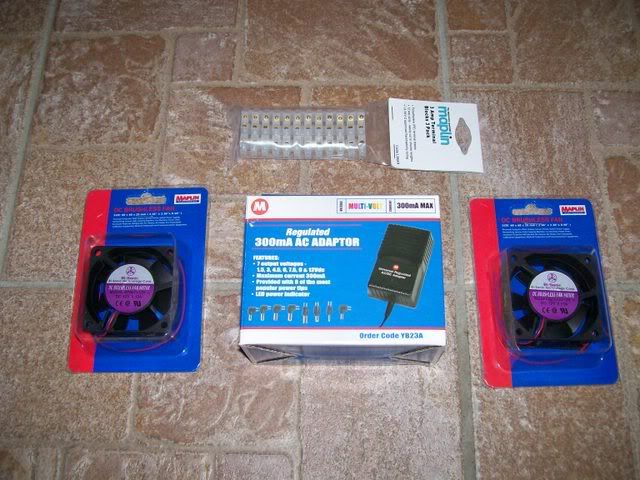
Small 12v transformer and fans.
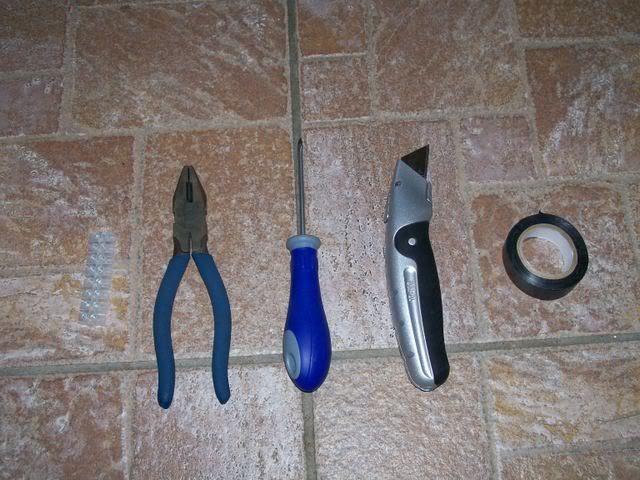
The tools I used to perform the DIY job
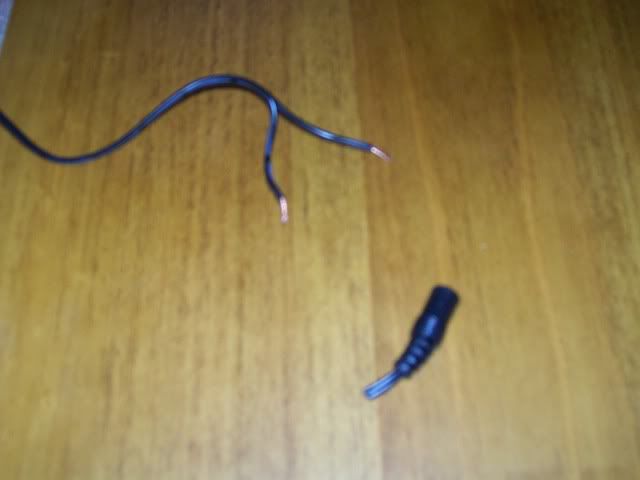
The first thing I did was to snip off the coupling at the end of the transformer lead (dont need that)
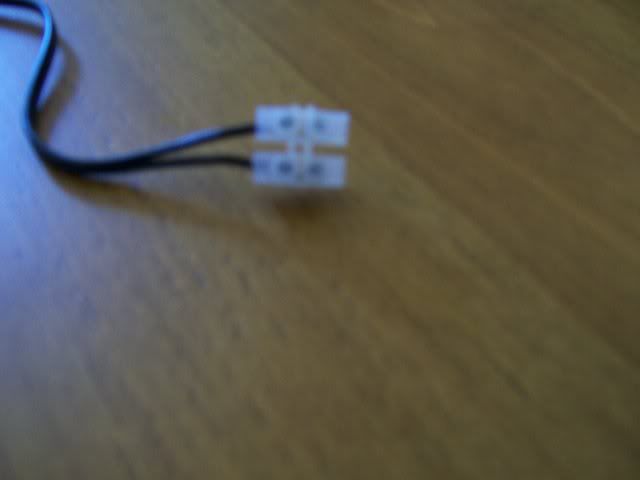
and attach the wires to a small connector block (Black=Ground......Black with white stripe= Live) remember this its important.
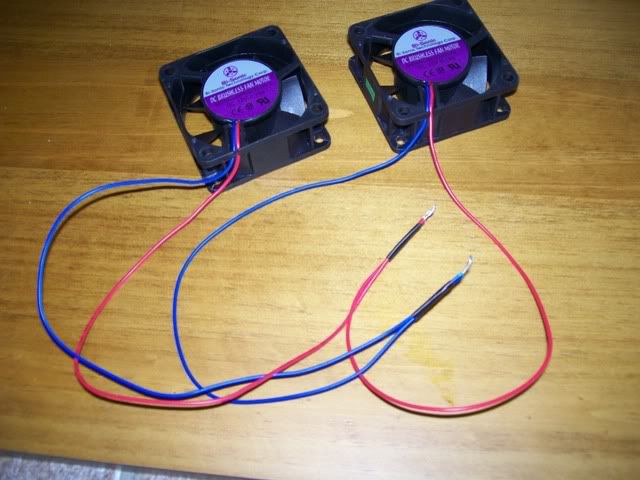
Next I joined the two fans together (Blue=Ground........Red=Live)
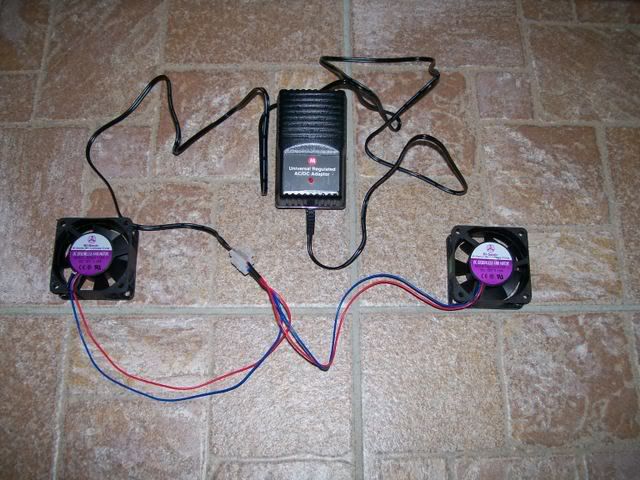
The next task was to join the whole thing together and test.
BINGO! it actually works, I couldn't believe how beautifully simple this job was and it couldn't have taken me more than half an hour.

Then I proceeded to fit it inside the canopy as neatly a possible, sure pushed for room I can tell you.
Regards
BigC
PS...This is an old thread I wrote up for another marine based forum, but I'm sure the build can be adopted to suit anyone who is experiencing overheating or the need for heat dissipation with their tanks.
Juwel lights problems
- Details
- Written by Puddlefish
- Parent Category: Articles
- Hits: 5481
Here follows a walkthrough by a fellow aquarist.
Firstly, inside the light bar there is only a bunch of wires and a ballast. There are 8 wires from the 4 endcaps and a live and neutral. The ballast is long white metal box. If you have checked the tubes/switch/and plug fuse then your problem lays with this ballast.
Right, before you start you need to source a replacment ballast. I checked out eBay and found there was a ready supply of just about every sort. As there are no seperate starters in the modern Juwel light bar then you need an electronic or digital balast. Mine, for instance needed a 2 x 18w T8 ballast (being there are 2 tube at 18w and it's a T8 type light)
You will also have to source a piece of plastic slightly bigger than the piece you are going to cut out of the light bar
After making sure it's not pluged in! remove the tubes. You need to have a cutting tool. I used a small diamond cutter. A dremmel is a good tool too. I decided to cut in from the underneth side of the light bar so the repair would be hidden.
1st picture shows a cut out I made. (Do not cut too deep as you may cut wires, the plastic is onlly 1-2mm thick) Also, do not cut right to the edge as you will need a flange to stick the cover on later.

Remove the cut out to reveal the ballast

Next pull out the ballast, you may need to spread the light bar to allow it to come out

Then you need to disconnect the wires. I marked them with tape and corresponding numbers. To disconnect the wire press down on the little tags and pull on the wire gently. The live and neutral are at the other end.

Here's the clever part. Cut a small section from the removed piece of casing that the ballast holding screw goes into.

With these pieces screw them to the new ballast (for spacing then glue them to the new plastic 'patch' which has been made slightly bigger than the cut out. When dry remove the ballast from the patch leaving the mounting piece in place

Right now the wiring up. With the new ballast I got there were only 6 terminals but I had 8 wires from the tubes. If this happens to you then study the little diagram and it will show you that 2 of the wires need to be connected together.(see connector in picture) If your new ballast is the same as the old one then wire up using the numbers that you stuck on. The live and neutral go up the other end and unless marked you can put them either way around)
It would be a good idea at this stage to test the lights!

Next, fix the ballast to the plastic using the screws and your mounts that you stuck on earlier.

Now turn the assembly over and jiggle it into the light bar. You may have to spread it a bit. Now then, I decided not to glue it in place incase I ever had to remove it again. I opted to silicone it in place and added screw (stainless screws) for safety.

And finally the finished artical in working condition after being switch on and off several times then left on for 8 hours and again switch on and off several times......success :hyper:

Well I hope this helps someone but remember, I AM NOT AN ELECTRICIAN AND THEREFORE AM ONLY SHARING MY EXPERIENCES WITH YOU. IF YOU CHOSE TO COPY THEM THEN I TAKE NO RESPONSABILITY WHATSOEVER.
Aplochelius lineatus, A wolf in sheep's clothing.
- Details
- Written by Puddlefish
- Parent Category: Articles
- Hits: 12514
Hi,
This subject has been brought to my attention more times than I care to remember. The story would always be something along the lines of "Why have all my neons dissapeared" and when they revealed the rest of their tank inhabitants it was no suprise that Aplochelius lineatus was on that list. (mostly the Gold colour morph). These fish look very inviting to the ill informed aquarist when he or she spies them in their LFS tanks. Usually available around the 40mm size. Admitadily they do look stunning under the correct conditions. But beware all is not what it seems, this gentle giant stalks its prey and any small tetra is fair game. Due to the continuing sucession of similar posts I have decided to put pen to paper once more to cataloge the general care and maintainence of this beautiful Killifish.
Aplocheilus lineatus (Striped Panchax)



General
Aplocheilus lineatus is a fairly large robust killi which comes from the coastal/mid areas of India and Sri Lanka. There have been many colour forms circulating within the hobby of late, most notably is the "Gold" variety. This is the most common form found in our tanks today as it has a more striking colouration than the natural true striped variety.
Its natural habitat is varied as it is found in high altitude rivers, streams and reservoirs equally it is also common in lower lying lakes and paddy fields, it too has adapted to brackish conditions. This fish is very adaptable and its perhaps this trait that makes it easy to keep and breed in the home aquarium.
As I've already mentioned this is a quite large toothcarp which dwells on the surface waiting for an easy meal, it has been used quite sucessfully for mosquito control.
It should be kept in an aquarium no smaller than 90cms and will do quite well in water with a neutral pH, slightly soft and a temperature around 22-25'C. They can get to around 10cms in the home aquarium given the space and a varied diet which should always include some live varieties.
Colouration
Aplo lineatus possess a body shape thats indicitive of most of the genus, a body shape that is elongated and a turned up mouth region. The fins are round in shape and the back is slightly arched. The back has a bronze colouration and this becomes bronze to bronze/olive green on the flanks. Every other scale has a metallic Yellow/Gold appearance giving it a glow of irredescence The gill and head area is a yellowish white colour. The body also possesses nine black indistinctive stripes varying in depth and shade. In recent years there has been many colour variants on show ranging from the natural striped variety to captive bred Gold form. In the gold form all or most of the males scales are metallic yellow. Some of the other variants have more red colouration in the unpaired fins.
Sex & Breeding
Sometimes sexing this species can be a bit difficult, But in general the males are larger and a bright yellow and the females are smaller and a lot paler. The males also have longer more pointed anal fins, while the females fins are slightly rounded. The males also have fainter transversebands whilst the females bars are slightly more pronounced and a little wider. Sexing can also be performed by bagging the fish and shining a torch under the fishes abdomen. In the females belly region you should be able to spot egg sacs.
This fish is very easy to breed and rear and even the complete killifish novice should have little or no trouble rearing a batch of these beautiful fish to adulthood. They will even breed in the community tank (conditions apply when keeping with smaller fishes)
But for a more fruitful breeding program I afford my fish with a tank of 18"X10"X10" (7.79 gallons US or 6.49 UK)
The water should be slightly soft and acidic with a pH of around 6.7
This tank should have no decoration except for an air driven sponge filter, Heater/Stat set to 25'C and some man made floating mops (large)
www.irishfishkeepers.com/cms/component/o...ew/catid,7/id,72173/
I would always employ a ratio of one male to two females (Seperated and fully conditioned, fed with live foods for about a week prior) into a setup like this.
The male will constantly chase the females into the mops, where they will lay and fertilise a single egg each time.
Eggs and Fry Rearing
Aplo. lineatus eggs are very large and you can either collect the eggs on a daily basis or leave them in the breeding tank and remove the parents after about a week.
I like to collect the eggs, I do this on a daily basis when breeding such species. I use margarine tubs floated in the parent tank with a water depth of around 40mm. The eggs will be quite large for a killifish and opaque/whitish in colour. They are quite hard to the touch and can whthstand handling very well. I place around a dozen eggs in each tub and provide the tub with an airline set to a slow trickle. The eggs beging to go through many cell dividing processes over the period o 10-14 days whereby they hatch into perfectly formed fish fry. They now will be looking for a meal. Being fairly large fry lineatus can accept newly hatched brineshrimp from the outset coupled with microworm and finley crushed fish flakes. I feed around 3 times per day, dont over feed as that small body of water will soon foul and you will lose fry. They wont present any problems on that score, but as always keep the fry tubs clean and change 10-20% of their water daily.
A handy tool I like to use for keeping fry tubs clean is a syringe coupled to a piece of ordinary airline.
They will grow quickly given the above rearing methods. Then I would move them on to 1lb Ice Cream cartons and continue feeding as above maybe include some Grindalworm into their diet. With fry development going on at different rates provision must be provided to size grading within the tubs to help curtail sibling rivalry.
After this its plain sailing and move them on to a larger rearing tank proper. I would ween out the runts at this stage and discard.
Summary
This is a beautiful if quite large Killifish sp. I particularly like the Wild form but most of you may encounter the Gold form more often these days as it will have more of a commercial value to the LFS. Either way its nice Beginners killifish to start you on the road within this particular niche in fishkeeping. One species all killiifish enthuiasts should keep and breed atleast once. Always bear in mind that this species is a fairly large predator and will take any small fish as food. It posesses a cavernous mouth that can open quite wide to consume such prey. So be wary when you see this beautiful species in dealers tanks, think before you buy. It is truely a "Wolf in Sheeps clothing"
Breeding Overview
Nice easy Killi to get the beginner used to breeding techniques. They present no real problems in all aspects of their husbandry
Tank size: 18"x10"x10"
Decor: Adults - bare tank with floating mops, Fry - Java Moss
Water: Fairly Soft 80 ppm - pH 6.6 - 6.8
Temperature: 25'C
Waterchanges: Bi Daily (10%) for breeders and Daily (10-20%) for fry.
Filtration: Air driven sponge filters set to a trickle.
Feeding: little and often especially fry, remember to syphon off uneaten food.
Lighting: no artificial lighting.
Remember
A tight fitting lid or coverglass is essential
Thank you for taking the time to read through this long and informative article, I hope it will help someone starting out to keep killifish and also hobbyists who are having difficulity with this species.
Regards
C
Page 1 of 5


